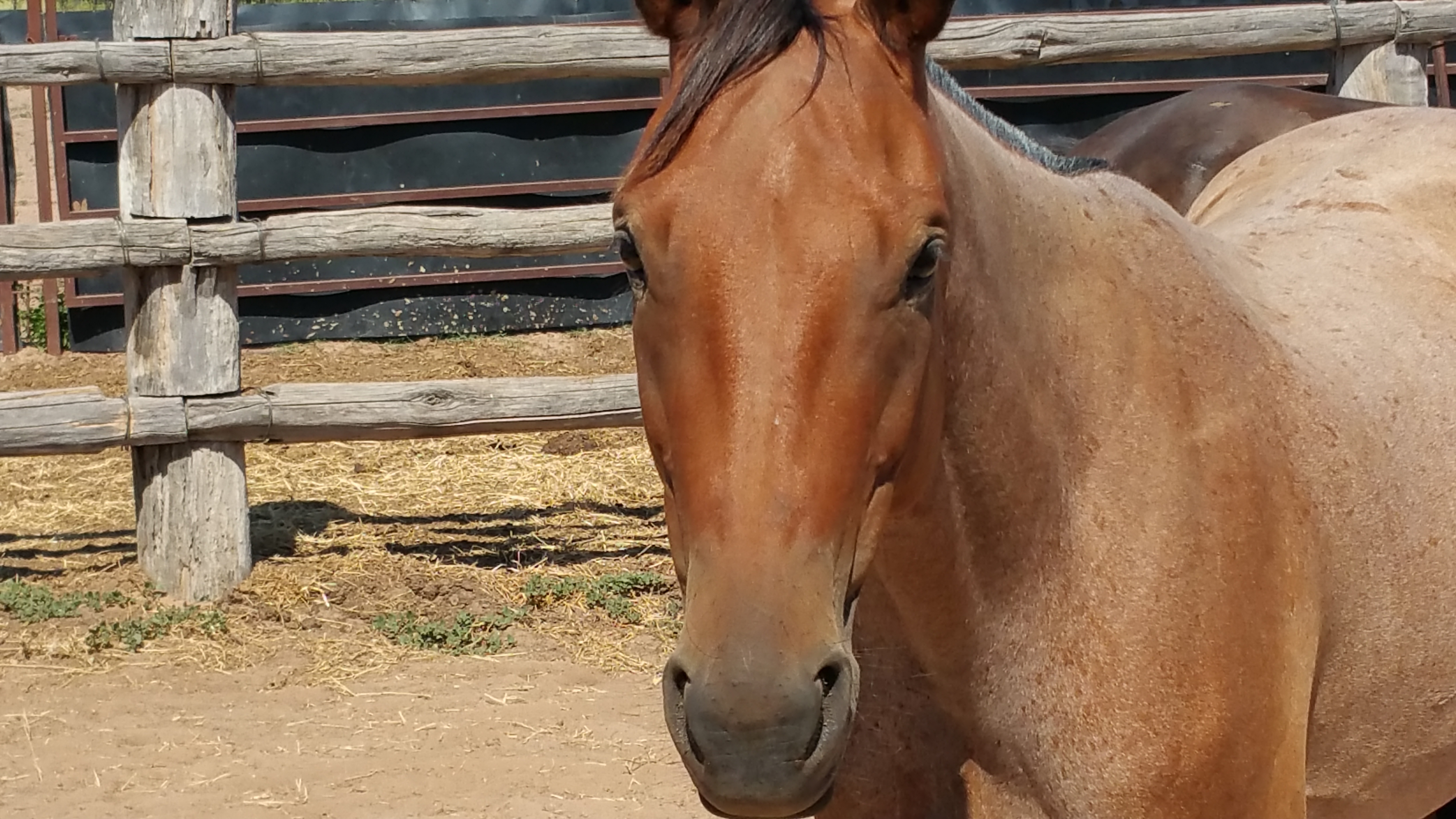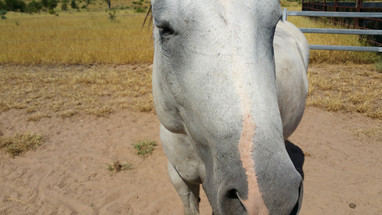Posted by Malcolm Green on 28th Mar 2017
Big Head and Oxalate Poisoning - a revolutionary approach that is improving horse welfare in tropical Australia
A recent Facebook question popped up on the topic of Big Head. This was Malcolm's reply. We thought you might like to read it:
Hi Folks,
I hope you don't mind me posting here as I obviously have a commercial
interest. But I also think that at EquiFeast we have a unique insight. What I
have to say will challenge almost everything you think you know about Big Head
but more importantly oxalate poisoning in general. I will try to make a number
of clear points but try as I might I know this will be a long post:
1. Big Head is only the tip of the iceberg.
I would estimate that only 5-10% of
oxalate affected horses ever show the skeletal demineralisation and enlargement
in the face that gives the disease its colloquial name. But nearly 100% of
horses are affected in terms of their function and welfare.
Shifting lameness, shortened gaits, difficult behaviour and depression
(probably pain induced), tying up, reproductive failure and cycling abnormalities in mares occur widely in horses grazing high oxalate pastures
whether in the coastal regions or inland.
This means that when people say they don’t have a problem they mean they don’t
have Big Head and that in turn means that “treatments” that appear to have
worked may have had no effect at all.

On a property I recently visited in Central Queensland three of the 30 horses were showing some signs of the broad nose typical of Big Head. The bay above and the grey in the thumbnail were the worst. But nearly all the horses have some level of issues due to the buffel grass pastures they are forced to feed. And that despite being fed DCP and limestone. These problems also occur with setaria, kikuyu, green panic and soursobs.
2. Many of you in this thread believe you have the answer with DCP and limestone.
But believe me once you look at the soft tissue and behavioural
issues you almost certainly do not. I recently traveled extensively through
Central Queensland and the consistent view of experienced cattlemen (using
stock horses for mustering), campdarfters, pony clubbers, farriers, equine dentists and veterinary surgeons
was that DCP and limestone really does not overcome so many of the problems.
The vets in particular know they have huge numbers of horses whose lameness
issues they simply cannot pin down with all sorts of expensive diagnostics.
3. The veterinary name is equally misleading
Nutritional Secondary Hyper Para
Thyroidism means the horse has elevated ParaThyroid Hormone (PTH). This is a
hormone that removes calcium and other minerals from the bones in order to
maintain blood calcium levels where they are needed.
Unfortunately PTH is only one of three or more such hormones and when we ran
our trials back in 2012 different horses “chose” different hormone strategies.
Only 40% used PTH. The active form of Vitamin D was a more common hormone to
find elevated and calcitonin was also used.
We had to use human hospitals to get these tests done. None of the hormone
tests are readily available to Australian vets without sending samples
overseas.
4. Everybody assumes that Big Head is a calcium deficiency disease.
The theory
goes that calcium oxalate cannot be absorbed so the horse is starved of
calcium. The solution is to pump the animals full of calcium (DCP and limestone
usually). The bad news is that whilst manufacturers make all sorts of claims
there is not one single shred of scientific evidence that ANY of the products
on the market (including ours) actually works.
It is one of life’s tragedies that despite this being a HUGE animal welfare
issue nobody has done any proper scientific trials. Yet scientists galore are
happy to repeat the “deficiency mantra”. A scientist’s opinion is NOT science.
Hopefully we are about to persuade one academic institution to run a proper
trial but the truth is that funding may not be available and there are no
shortcuts. With most products on the market claiming to take 9-12 months to
work any lattice crossover designed trial is likely to take 4-5 years to
conduct and still will fall short of both placebo control and “blindness”.
Please send you cheque or postal order to ………………..
5. Why we don’t think it is a deficiency disease?
• All the horses on our trial recovered from all their symptoms (facial bone
deformities (except for one older horse), short stepping gaits, intermittent
lameness, difficult behaviour). I’ll tell you what the treatment regime was
later.
• Calcium oxalate is absorbed - at least some of it. In our trial horses, once on the treatment
regime they excreted calcium oxalate in their urine. It cannot get to the urine
without being absorbed.
• They also excreted calcium carbonate in their urine. So they had enough
calcium in their diet to both remineralise the bones, get soft tissues
(tendons, ligaments and muscles) working properly and still had some left over.
• So you probably imagine we fed a calcium supplement. Well actually we took
away the DCP and limestone supplements. Yes we lowered the dietary calcium
dramatically! Yet their calcium metabolism normalised. The magnesium and
phosphorus was also removed.
• We did give chelated calcium (though much less calcium than we took away). And more
importantly the chelated calcium we used holds onto its calcium even more
tightly than calcium oxalate. This was reflected in the blood tests. Some
horses blood calcium (total and ionised) went up and some went down exactly the way we see
happening in non-oxalate affected horses in the UK.

On my most recent visit to Australia we drove through miles of setaria on the NSW north coast, endless hours of Buffel in central Queensland and quite a lot of green panic in the hills SE of Toowoomba (above).
6. Chelated calcium
You will read on this thread that chelated calcium is the key.
But you will read the argument that chelated calcium is protected from oxalates
(that is true – if the chelate binds calcium stronger than oxalic acid then it
won’t be stolen by the oxalate).
You will also read that it is absorbed better than more traditional calcium
supplements. Personally I have absolutely no idea if that is true. I don’t
trust the sorts of experiments that make claims about “bioavailability”. They
are far too easy to rig.
But frankly it doesn’t matter. If the chelate binds the calcium tightly in the
gut there is no reason to believe that it won’t bind the calcium in the
bloodstream and body fluids. This may seem a revolutionary thought but since
calcium chelates have been recognised for decades as a perfectly normal
component of healthy blood it should be no surprise.
7. So we are left with a number of dilemmas:
a. Big Head doesn’t seem to be a calcium deficiency disease as horse recover
perfectly when traditional calcium supplementation is removed from their diet and not replaced
with anything that supplies calcium. Except they need .....
b. ... the provision of chelated calcium (a large, intact,
stable, uncharged molecule that does not give up its calcium ion). This seems to correct the problem quite quickly (2
months is quite typical).
c. But we can only speculate on what is going on and, quite simply we don’t
have the time or space to do that here except to say that we believe it has a lot to do with a process called "calcium signalling" which is used in almost every cell in the body. So we believe that chelated calcium has a role in calcium signalling - probably in the removal of calcium ions from the cell cytoplasm.
8. Not all chelated calcium supplements are created equal
Other products on the market claim to contain chelated calcium has less than 5% of its calcium from a
chelate. The rest is limestone and one other inorganic source. In EquiFeast’s BREAK FREE 100% of the calcium is chelated and exactly as the product used in the 2012 trials.
9. Is this an expensive option?
If you are comfortable that your current DCP and limestone technology is
working please stick with it. Chelated calcium is a bit more expensive.
If your horse is depressed, easily distracted, difficult, has shifting
lameness issues, isn’t cycling properly (mares) etc etc then its lack of
welfare or your inability to get maximum use out of it has a cost. Keeping an
unhealthy horse costs far more than keeping a healthy one.
Some of the experienced horsemen I met last month commented that an effective
supplement (BREAK FREE) was far cheaper than buying in non oxalate feeds.
Effectively BREAK FREE was turning oxalate grasses into safe, effective and
cheap feed.
If you want to know more about our trials please take a look at this video. My
apologies for Eloise’s English accent but it serves to highlight that we were
invited to Australia to see if our technology could solve this primarily
Australian problem. Between Eloise and I we have made probably 7 visits in the
last 5 years and I will be back again in May – my third trip in 6 months. And these visits are primarily to spread the word and also to develop an approach that makes this technology easier to apply to horses that are handled relatively rarely - watch this space:
https://www.youtube.com/watch?v=YhpX_5jmA38&t=727s

